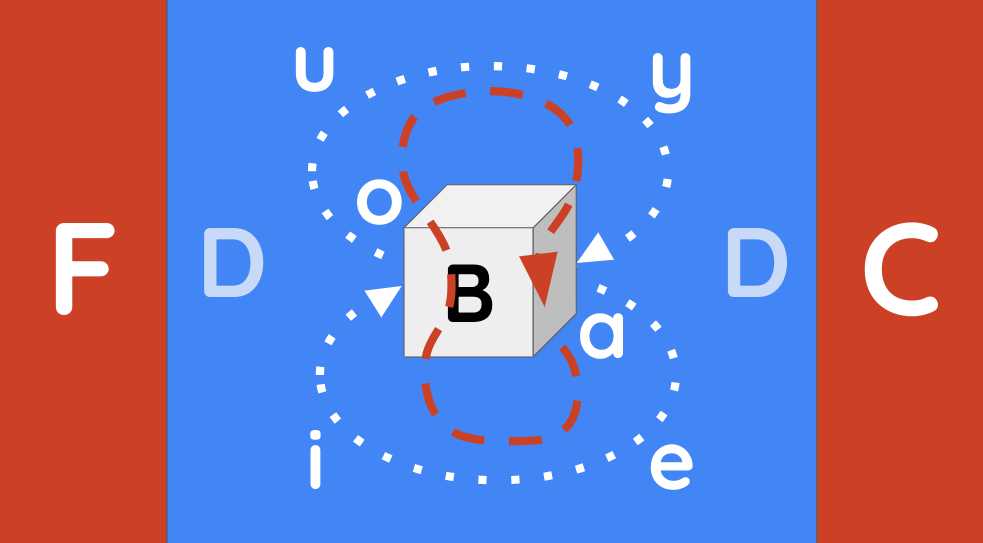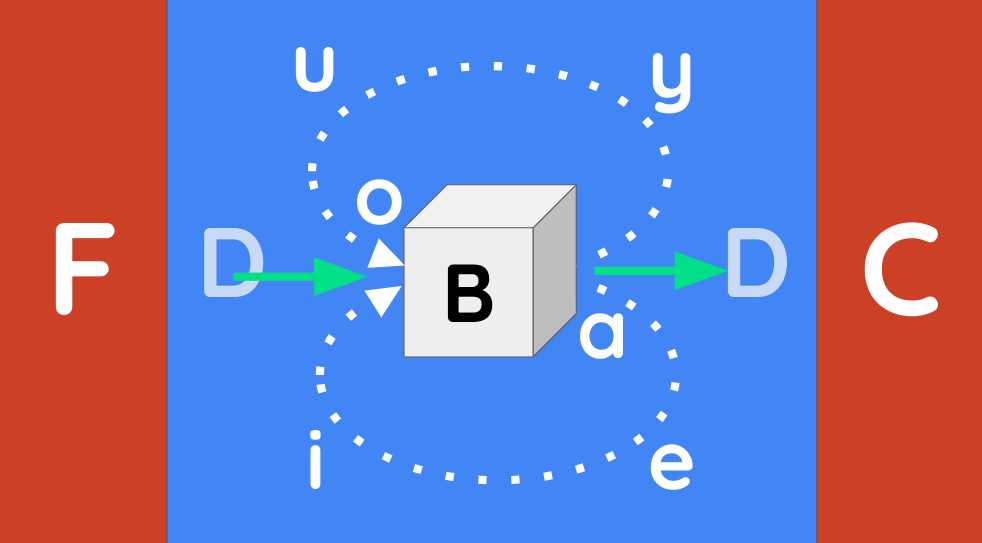Solids and Fluids in Motion
Table of Contents
58. If fluid particles move more slowly than a hard body within in it, then it does not have the character of a fluid.
Body B will begin to move when:
- it is pushed by a force from
Fgoing toC - the fluid particles that hindered it from moving towards
Cchange their determination.

Body B will move with the same speed as that force assuming that the fluid move at least equally as fast as that force.
But if the fluid moves slower than the force, then they will not be fluid.
The slightest force would not be enough to move the hard body.
- Instead, a stronger force is required to overcome the resistance from the slowness of these fluid particles.
Hence, we often see air, water, and other fluids:
- strongly resisting bodies that move very quickly within them
- yielding easily to them when those bodies move more slowly.
59. A hard body, pushed by another hard body, does not borrow all its motion from it, but also partly from the surrounding fluid
When body B is thus moved towards C, its motion does not come solely from the external force pushing it.
- Rather most of it comes from the fluid particles.

Those which make up the circles AEIO and AYUO lose as much of their motion as those acquired by the particles of body B between O and A.
This is because they will now be part of the circular motions AEIOA and AYUOA.
As they proceed further towards C, they will join new fluid particles.
60. However, it cannot acquire more speed from this fluid than what it already has from the impacted solid
Why did I not say that the absolute direction of the fluid particles is changed? Why is it that it is changed only to the extent required to not impede body B’s motion?
Body B cannot move faster than it is propelled by an external force even though all the particles of fluid FD often have much more agitation.
Assume that the body B is initially immobile within of fluid FD.
- It is now propelled by some external force such as my hand with a slow motion.
- The impetus from my hand is not the sole reason for it to move faster.
My hand made the fluid particles move much faster [in circular motions].
- But they cannot move in circular motions faster than this impetus.
Instead, they are propelled towards any other parts as before, only faster.